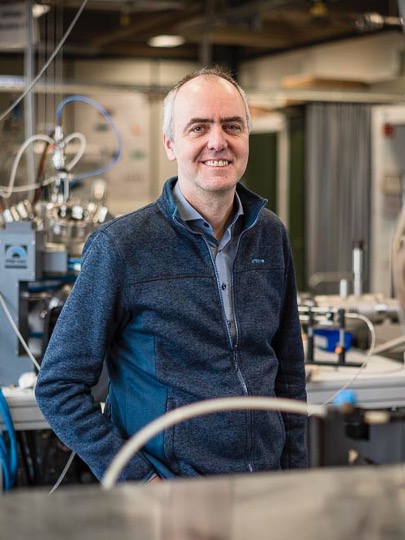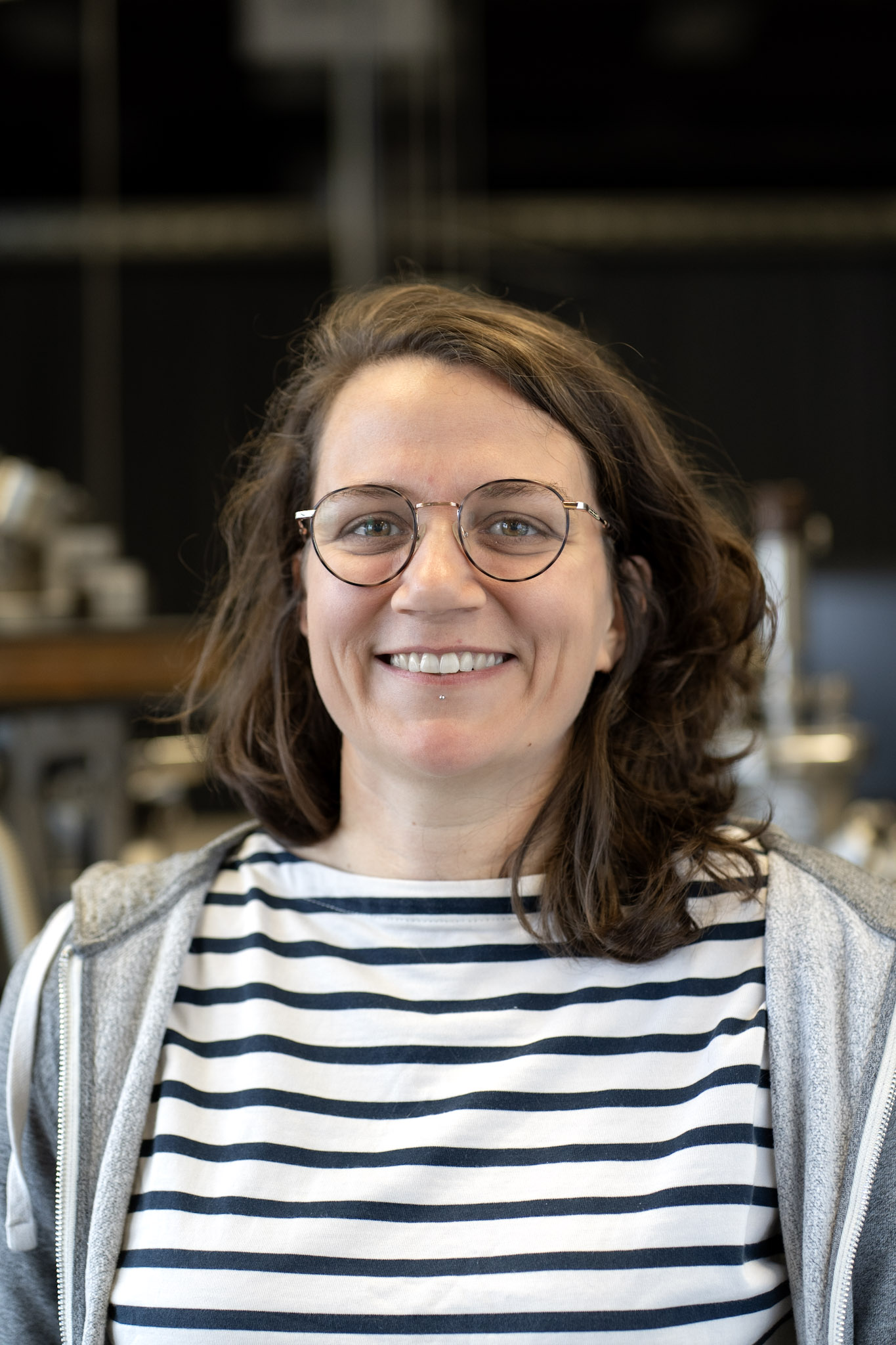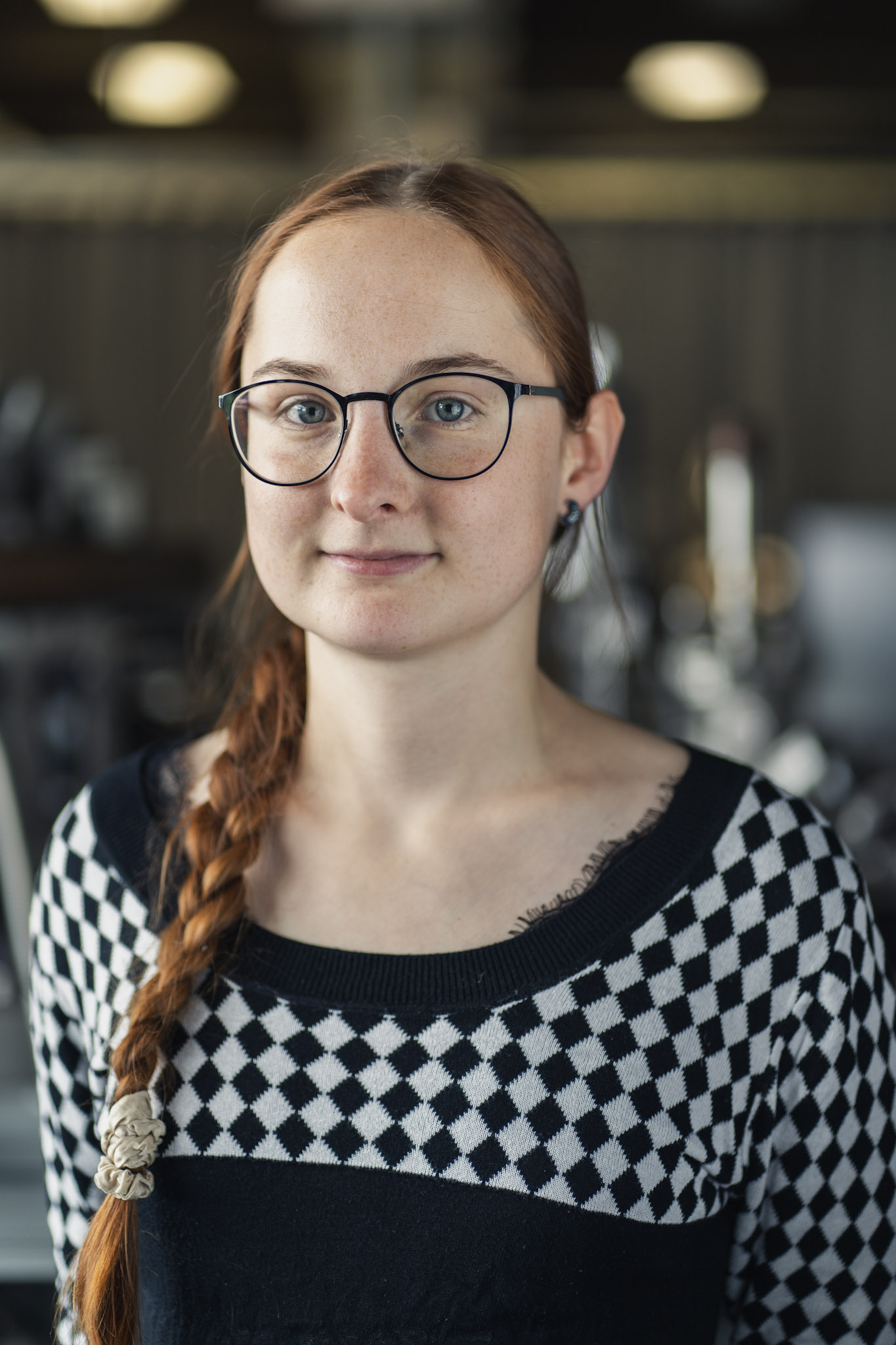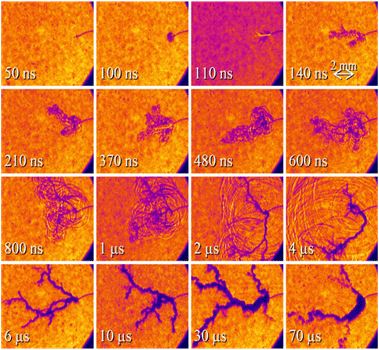B7: Reaction chemistry of plasmas in liquids interacting with surfaces
Principal Investigators: K. Grosse, A. von Keudell
Team

von Keudell, Achim (Principal Investigator) |

Chauvet, Laura (PostDoc) |

Pottkämper, Pia-Victoria (PhD) |

Riabosthan, Mariia (Staff) |
Description

Plasmas in direct contact with liquids or plasmas inside liquids allow a high mass transfer of reactive species from the gas phase into the liquid. If these plasmas in liquids are interfaced with solids, very fast and efficient reaction rates for surface reactions can be realised. Such systems are relevant for the field of degradation of toxic organic compounds in liquids, plasma enhanced anodisation of metal surfaces inside an electrolyte, or as a method to recover a catalytic surface in an electrochemical cell. In this project, FTIR spectroscopy in the attenuated reflection mode will be used to probe the plasma-liquid-solid interface directly. The liquid chemistry is assessed using optical absorption spectroscopy in the visible spectral range. This method is employed to analyse aluminium oxide that is created during plasma enhanced oxidation (PEO) in a liquid. By monitoring the different oxygen bonds, the progress of the anodisation process is monitored. Similar, the degradation of an oxidized copper surface used as catalyst for CO2 dissociation in an electrochemical cell is monitored in-operando. By striking a plasma at the liquid-solid interface, the recovery of the catalyst surface is monitored. Finally, the influence of in-liquid-plasma on the efficiency of a biocatalyst is evaluated. In all these experiments, the effects on the surface and in the plasma can be separated, because the broad absorption features of the TO and LO phonon of the metal oxides can easily be distinguished from the narrow absorption bands of the free gas molecule created in the plasmas. The reaction sequences at the plasma-liquid-solid interface are elucidated by connecting the variation of the surface processes, with that of the plasma chemistry.
Publications
- Plasma in Liquids induced modification of Cu surfaces
P. Pottkämper, A. von Keudell
J. Phys. D (2024) accepted - Propagation of nanosecond plasmas in liquids - streamer velocities and streamer lengths
E Jüngling, K Grosse, A von Keudell
JVSTA 40, 043003 (2022)
Repository: https://rdpcidat.rub.de/node/535 - Ignition and propagation of nanosecond pulsed discharges in distilled water - negative vs. positive polarity applied to a pin electrode
K Grosse, M Falke, A von Keudell
J. Appl. Phys. 129, 213303 (2021) - Chemistry in Nanosecond plasmas in water
L. Chauvet, C. Nenbangkaeo, K. Grosse, A. von Keudell
Plasma Process. Polym. 201900192 (2020) - Nanosecond pulsed discharges in distilled water - Part I: Continuum radiation and plasma ignition
K. Grosse, V. Schulz-von der Gathen, A. von Keudell
Plasma Sources Sci. Technol. 29, 095008 (2020) - Nanosecond pulsed discharges in distilled water - Part II: Line emission and plasma propagation
A. von Keudell, K. Grosse, V. Schulz-von der Gathen
Plasma Sources Sci. Technol. 29, 085021 (2020) - Nanosecond plasmas in water: ignition, cavitation and plasma parameters
K. Grosse, J. Held, M. Kai, A. von Keudell
Plasma Sources Sci. Technol. 28 085003 (2019)
Thesis
- Katharina Grosse, PhD thesis - 03/2021
Discharge ignition, dynamics and chemistry of nanosecond pulsed plasmas in water - Maike Kai, Bachelor thesis - 09/2018
Optical Analysis of a Nanosecond Plasma Inside Liquids - Chaiyasit Nenbangkaeo, Bachelor thesis - 07/2019
Analysis of hydrogen peroxide production in nanosecond pulsed discharges in water - Thorben Holländer, Bachelor thesis - 12/2019
Determination of the OH concentration in plasma treated liquids - Fatma-Nur Seferoglu, Bachelor thesis - 09/2019
Surface modification of a copper substrate through the reaction chemistry generated by pulsed plasmas in water - Elia Jüngling, Bachelor thesis - 10/2021
Propagation of streamers in nanosecond plasmas in water - Marina Falke, Bachelor thesis - 03/2021
Comparison of nanosecond pulsed discharges in water for different pulse polarities - Pia-Victoria Pottkämper, PhD thesis - ongoing
- Fatma-Nur Seferoglu, Master thesis - 11/2022
Optical analysis of microsecond pulsed plasmas in liquids

